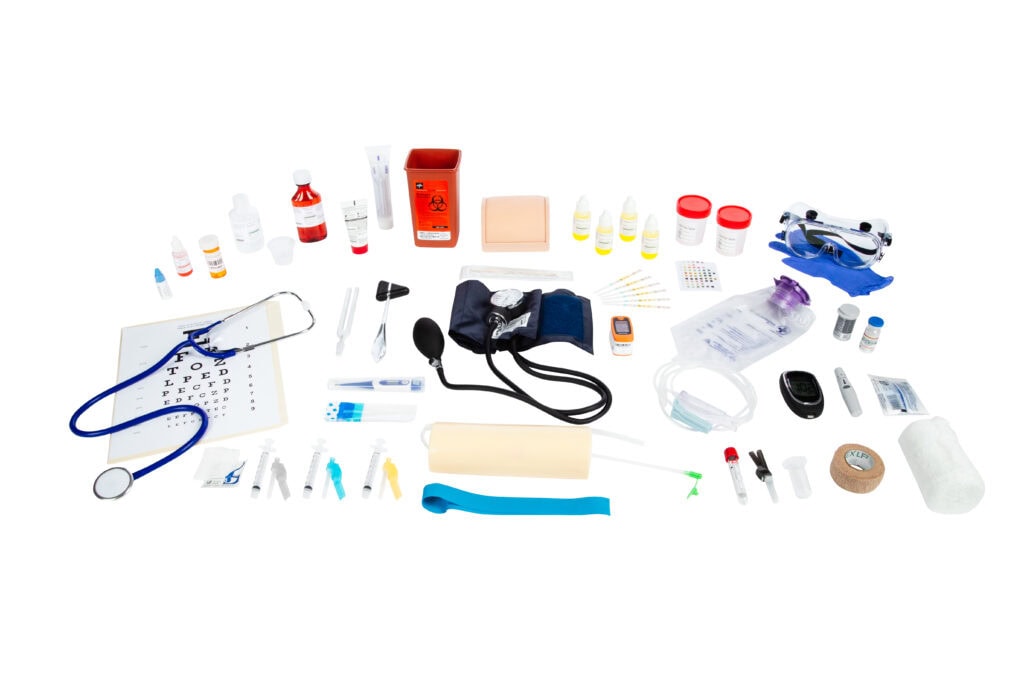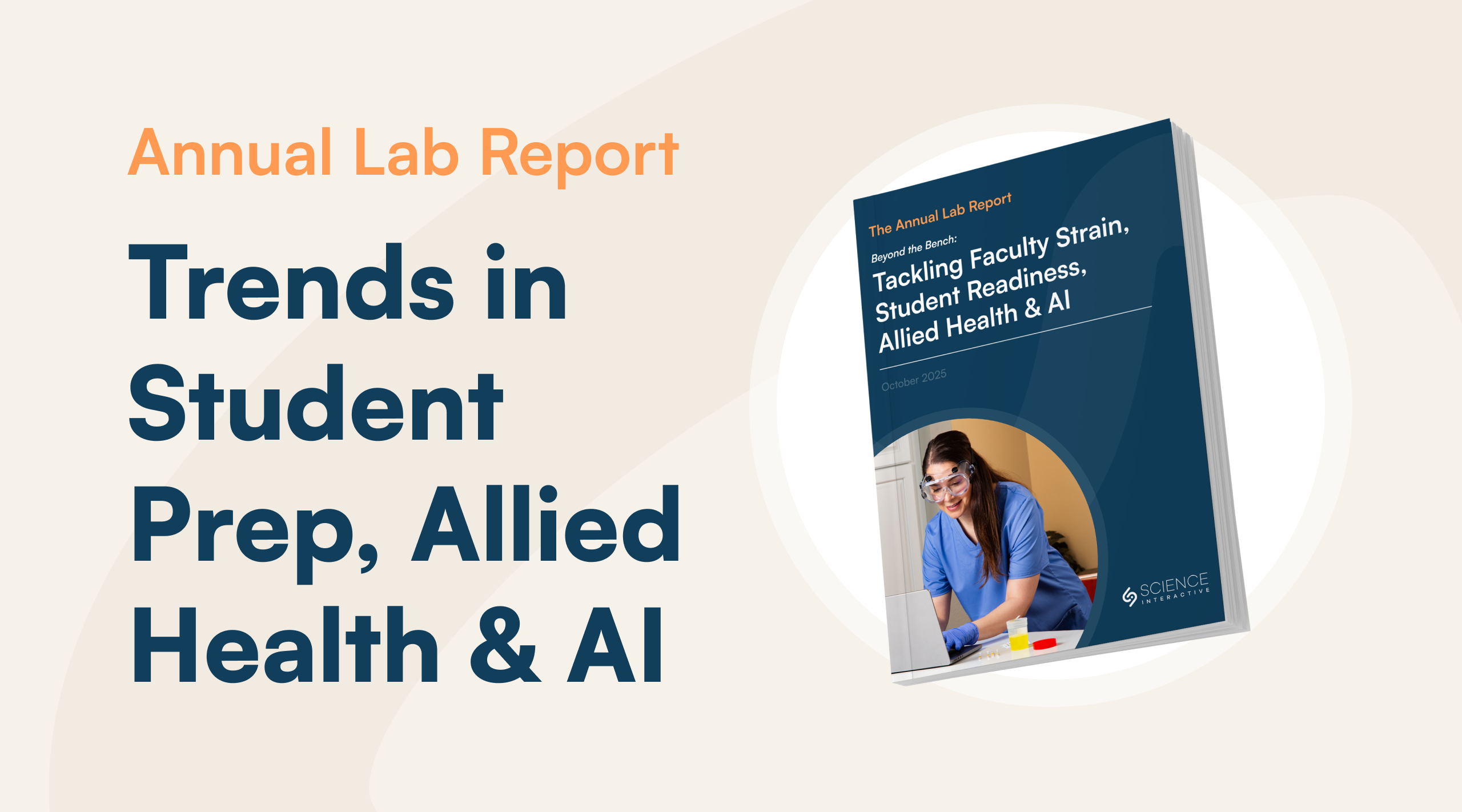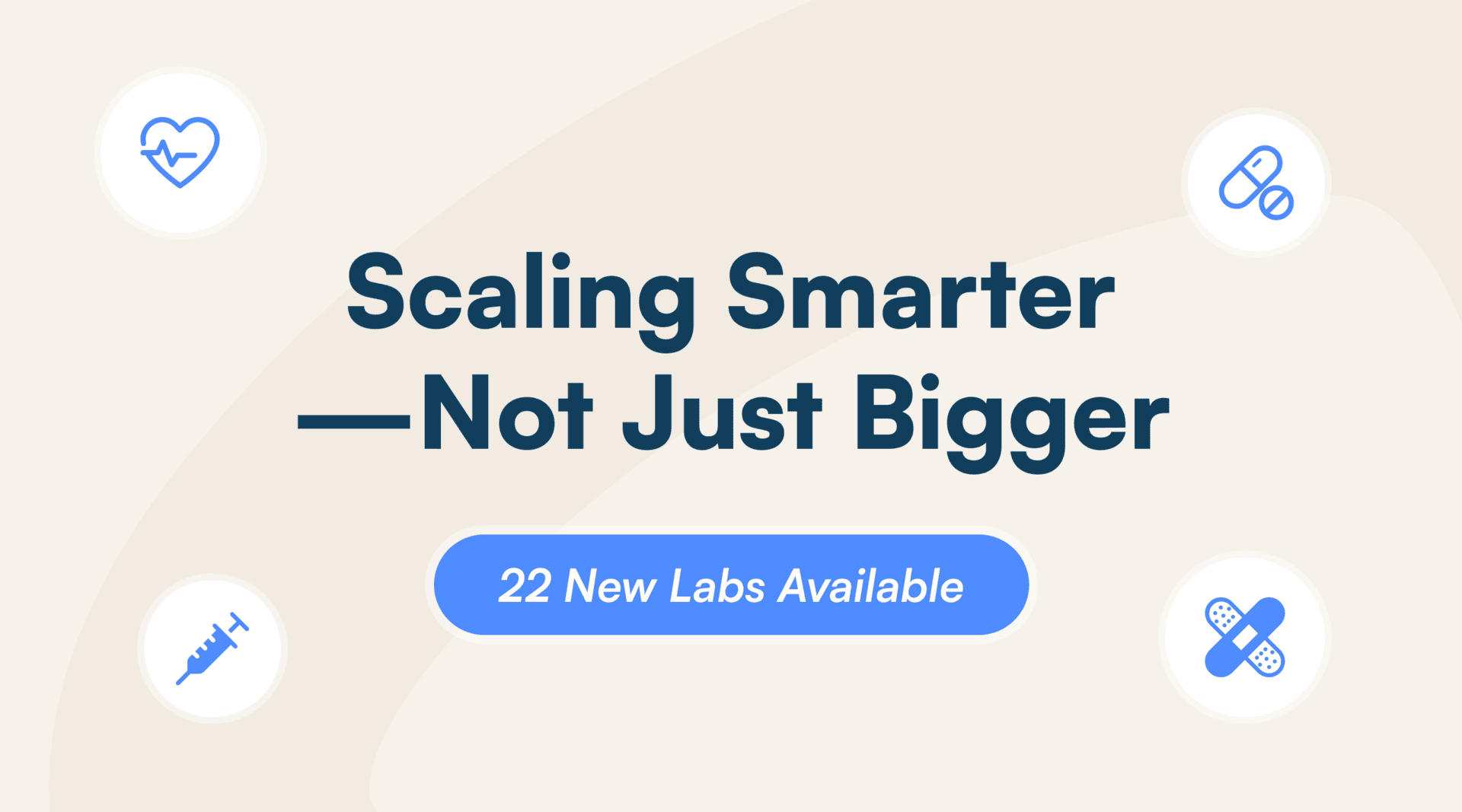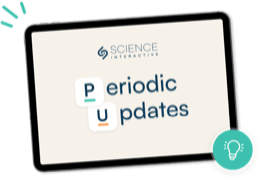Knowledge Is the Starting Line—Not the Finish Line
Knowing the difference between the iliac crest and the ischial tuberosity is great. But it won’t help your student if their hands lock up when it’s time to draw blood.
Here’s the thing: strong nurses don’t just know the content. They do something with it—confidently, calmly, and under pressure.
That kind of readiness doesn’t show up in week eight of clinicals. It begins in the lab—in fact, in all the labs.
From the first week of General Biology to the final stretch of Fundamentals, students build their professional identities one repetition at a time. But too often, prerequisite science courses and clinical prep exist in silos. What students learn in anatomy never quite makes it to the wound dressing table. What they memorized in microbiology feels miles away when prepping for injection.
This disconnect has real consequences. Studies have spotlighted the high attrition rate in key gateway courses like A&P and chemistry, citing them as major barriers to program completion—especially for community college and returning students.
If we want to prepare the next generation of nurses, we need to do more than make sure they leave the course with knowledge and competencies. We need to build a coherent path that takes students from foundational understanding to clinical fluency—step by step, lab by lab.
The Only Kit That Grows With Your Program
That’s where Science Interactive comes in.
Most lab products are locked to a single course. But SI supports students across health science disciplines and topics, from early prerequisites to hands-on clinical skills—without having to switch platforms, systems, or teaching styles.
Start with foundational kits for:
- Anatomy & Physiology
- Microbiology and Biology
- General, Organic & Biochemistry (GOB)
- Genetics
Many of these labs are hands-on, interactive, and designed for hybrid or fully online delivery. They are coupled with virtual labs to reinforce learning. Throughout, students use real tools, complete real experiments, and reinforce what they’re learning through tactile engagement.
Then, as they progress through the program, they can transition into the Nursing Fundamentals, which includes:
- Vital signs tools (stethoscope, sphygmomanometer, thermometer, etc.)
- Injection arms & practice pads for performing intradermal, subcutaneous, and intramuscular injections
- Blood draw simulators with realistic tissue
- Wound care materials for practicing dressing, cleaning, and assessment
See for Yourself! Request a Kit

What makes this different? It’s not two separate lab experiences. It’s one continuous, connected journey—where every skill builds on what came before. Nursing Fundamentals helps students gain the procedural confidence needed to build on previous courses and so they can enter their clinical placements prepared.
🧠 Related read: Check out Are Your Students Ready for Careers in the Health Sciences? to see how early lab confidence links directly to long-term clinical readiness and student retention.
Ditch the Spreadsheets for Course Management Sanity
It’s time to let the spreadsheets die. Managing multiple courses, modalities, and lab types shouldn’t require a PhD in logistics. That’s why the Science Interactive Lab Portal exists.
It’s a centralized digital hub where you can:
- Guide students through each step of the lab from exploration to experimentation and evaluation
- Give students the chance to test their knowledge using questions that are auto-graded
- Monitor student progress and submissions
- Adjust pacing for different cohorts (e.g., accelerated vs. traditional)
- Grade and give feedback in real time
- Integrate directly with major LMS platforms like Canvas, Moodle, and Blackboard
More importantly, this streamlines the academic and logistical connection between science departments and nursing programs—helping students experience their training as one cohesive, thoughtfully sequenced arc.
Your Students Deserve a Smoother Climb
Let’s talk about what happens when students bounce between inconsistent lab formats.
One semester, they’re working with a physical dissection kit. The next, they’re only doing simulations on their laptop. Then suddenly, they’re expected to handle injection equipment with no tactile experience under their belt.
The result? Confusion. Doubt. And worse—disengagement.
Modality switching, and the inconsistency that often comes with that, isn’t just a delivery issue—it can develop into a trust issue. It chips away at the quality of the student experience. When every course feels like a totally different system with new tools, formats, and expectations, students stop focusing on the material and start playing mental tech support. Instead of diving into the content, they’re stuck figuring out how to learn again and again. That kind of friction doesn’t just slow them down—it wears them out.
When learners don’t know what to expect, they burn extra energy just figuring out how to function. Science Interactive solves that with:
- Consistent kit structure and packaging
- Familiar tools that appear across courses
- A unified platform that works across disciplines and modalities
Students who start their journey with Science Interactive labs and kits in Bio or Chem already know how to work with the materials and the system when they reach Fundamentals. That continuity builds trust, confidence, and momentum—especially critical for learners juggling work, family, and coursework.
Whether You’re Teaching Weekends, Hyflex, or 6-Week Bootcamps
Real talk: nursing education doesn’t look the same across campuses anymore.
Some instructors are leading eight-week intensives. Others are teaching night hybrid classes with half-online, half-in-person labs. Some students are logging in from across the state while balancing caregiving and a 40-hour job. These are scenarios that could only seem dreamt up just a short decade or two ago, and because of that, it’s been challenging to keep pace.
Science Interactive’s model was made for this kind of flexibility.
The hands-on kits, labs, curriculum, and portal work just as well in a 16-week semester as they do in accelerated, modular, or hybrid formats. Instructors can:
- Rearrange the lab order to match course pacing
- Offer asynchronous lab access to remote learners
- Extend timelines for career-changers or returning adults
- Customize feedback based on student needs
- Prepare students with prep-lab, hands-on & virtual labs prior to clinical placement
🧠 Related read: Students have said over and over that feeling unprepared is their biggest hurdle. See the full breakdown in Addressing Students’ Top Challenge of Preparedness.
Plug-and-Play, Not Rip-and-Replace
This isn’t some rigid, top-down system that forces you to rewrite your syllabus. SI’s labs are modular and instructor-friendly. You can tailor our curriculum, use as is, or keep your own curriculum, plugging in the labs that reinforce what you’re already teaching.
You’re not boxed in. You’re supported, and instructors keep control of:
- Grading structure
- Learning and course objectives
- Lab pacing
- Modality decisions
The goal isn’t to take over—it’s to amplify the great teaching you’re already doing and ensure consistency across all of your online, hybrid or on-campus courses.
🧠 Related read: The Modality Shuffle: Why Students Deserve a Familiar Lab Experience Every Semester
One Program. One Experience: Ready to Build a Smarter Path From Prereqs to Practice?
Let’s zoom out for a second. When you connect prerequisite science labs with clinical skill development using consistent tools, structure, and pacing, students start to see the bigger picture.
They’re not just checking off lab credits. They’re building fluency across systems and competencies. They understand how microbiology links to wound care; how blood chemistry connects to drug metabolism; how skills they first practiced in a safe, low-stakes kit become second nature in a clinical placement.
That kind of continuity doesn’t just help students. It helps faculty, department heads, and entire programs deliver more cohesive, impactful education across sections, modalities, and time frames.
And yes—this directly affects retention. Students who feel supported, prepared, and capable are more likely to persist through challenges and complete their programs.
Science Interactive gives instructors a flexible, scalable way to connect every phase of lab learning—from the first day of A&P to the final dressing check in Fundamentals. With our all-in-one solution, we can help you create a consistent nursing student experience no matter how you deliver the course.
When we connect the path for students, we don’t just build better nurses.We make the teaching part smoother, too.
Reach out to the Science Interactive team to schedule a quick consult.
Discover more articles

Research Reveals a Dual Prep Problem in STEM Courses & New Opportunities to Deliver Rigor at Scale

Science Interactive Launches New Nursing Fundamentals


